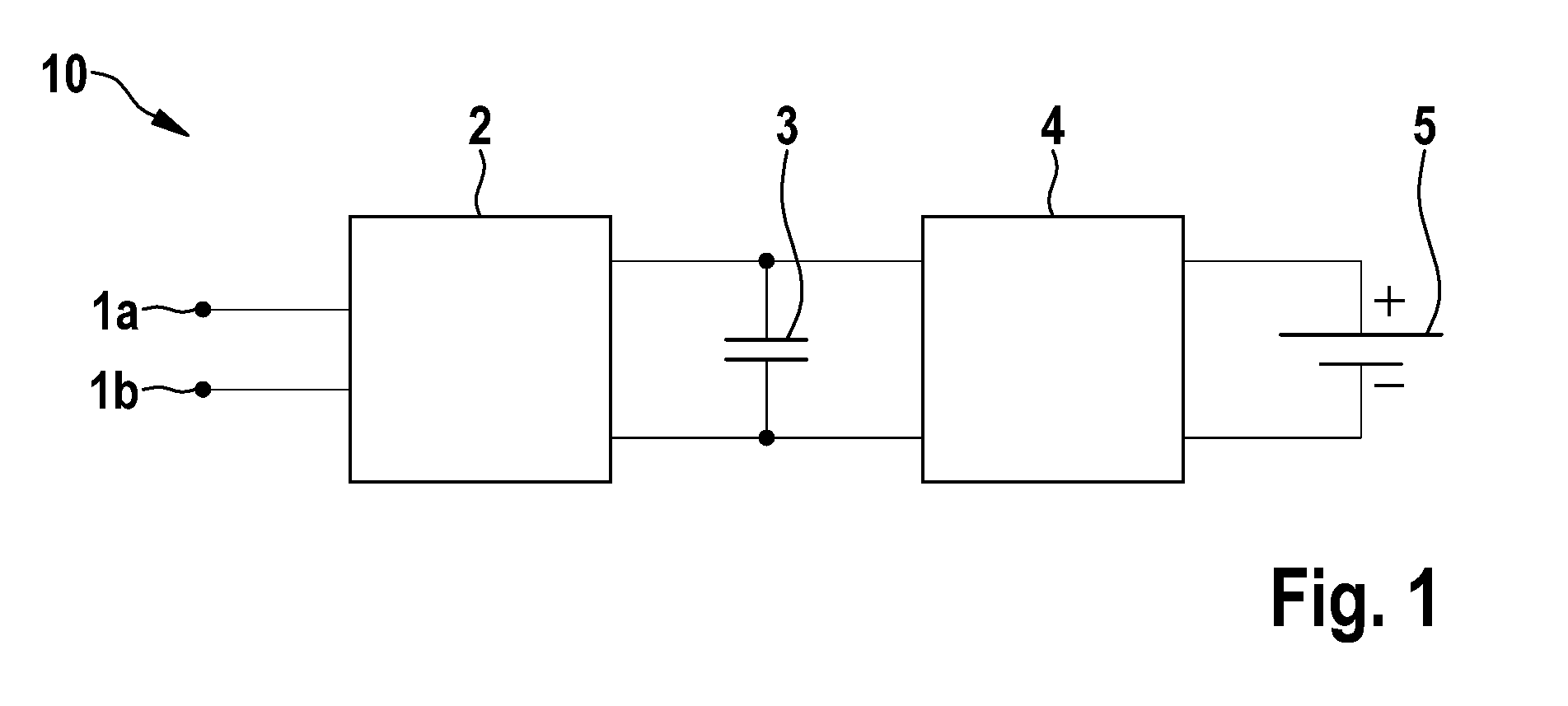Push-pull converter and modulation method for controlling a push-pull converter
a technology of push-pull converter and modulation method, which is applied in the direction of electric variable regulation, process and machine control, instruments, etc., can solve the problems of power loss, reduce the number of switchable components, simplify the control of the push-pull converter, and reduce the complexity of the measurement technology for detecting exact changeover time points
- Summary
- Abstract
- Description
- Claims
- Application Information
AI Technical Summary
Benefits of technology
Problems solved by technology
Method used
Image
Examples
Embodiment Construction
[0031]FIG. 3 shows a schematic depiction of a push-pull converter 4 according to one embodiment of the invention. The push-pull converter 4 comprises a primary-side input converter circuit 44 with the first switching devices 31, 32, 33, and 34. The input converter circuit 44 is designed to convert an input DC voltage, which drops across said input converter circuit 44, into a primary-side AC voltage in a primary-side winding of a transformer 39. Said input converter circuit 44 is configured in a full-bridge circuit as in the push-pull converter from FIG. 2; and therefore the switching devices 31 and 33 form a first primary-side semi-bridge comprising a center tap, which is connected to a first connection of the primary-side winding of the transformer 39, and the switching devices 32 and 34 form a second primary-side semi-bridge comprising a center tap, which is connected to a second connection of the primary-side winding of the transformer 39. Provision can be made to dispose an ext...
PUM
 Login to View More
Login to View More Abstract
Description
Claims
Application Information
 Login to View More
Login to View More - R&D
- Intellectual Property
- Life Sciences
- Materials
- Tech Scout
- Unparalleled Data Quality
- Higher Quality Content
- 60% Fewer Hallucinations
Browse by: Latest US Patents, China's latest patents, Technical Efficacy Thesaurus, Application Domain, Technology Topic, Popular Technical Reports.
© 2025 PatSnap. All rights reserved.Legal|Privacy policy|Modern Slavery Act Transparency Statement|Sitemap|About US| Contact US: help@patsnap.com



